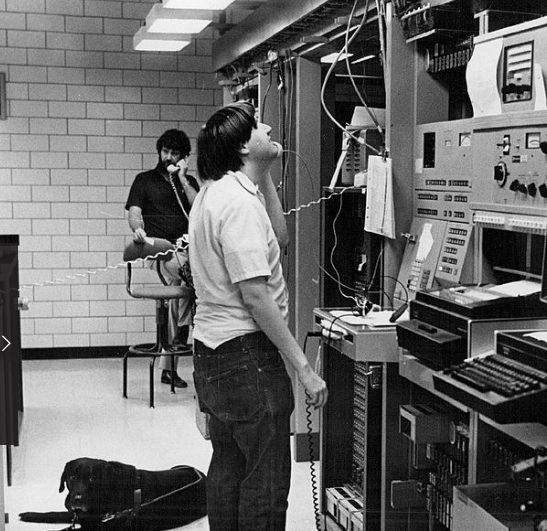Reading
- Jasmina Tesanovic (2015): Ada Lovelace: What would go into an Internet of Women’s Things?
- Vannevar Bush (1945) in The Atlantic: As We May Think
The internet used to be this utopian idea - free exchange of knowledge, communication etc.
Ada Lovelace: Mathematician, writer, gambler and the writer of the first programme. Unlike Babbage, show had this grand, poetic vision of what mathematics and computing could do.
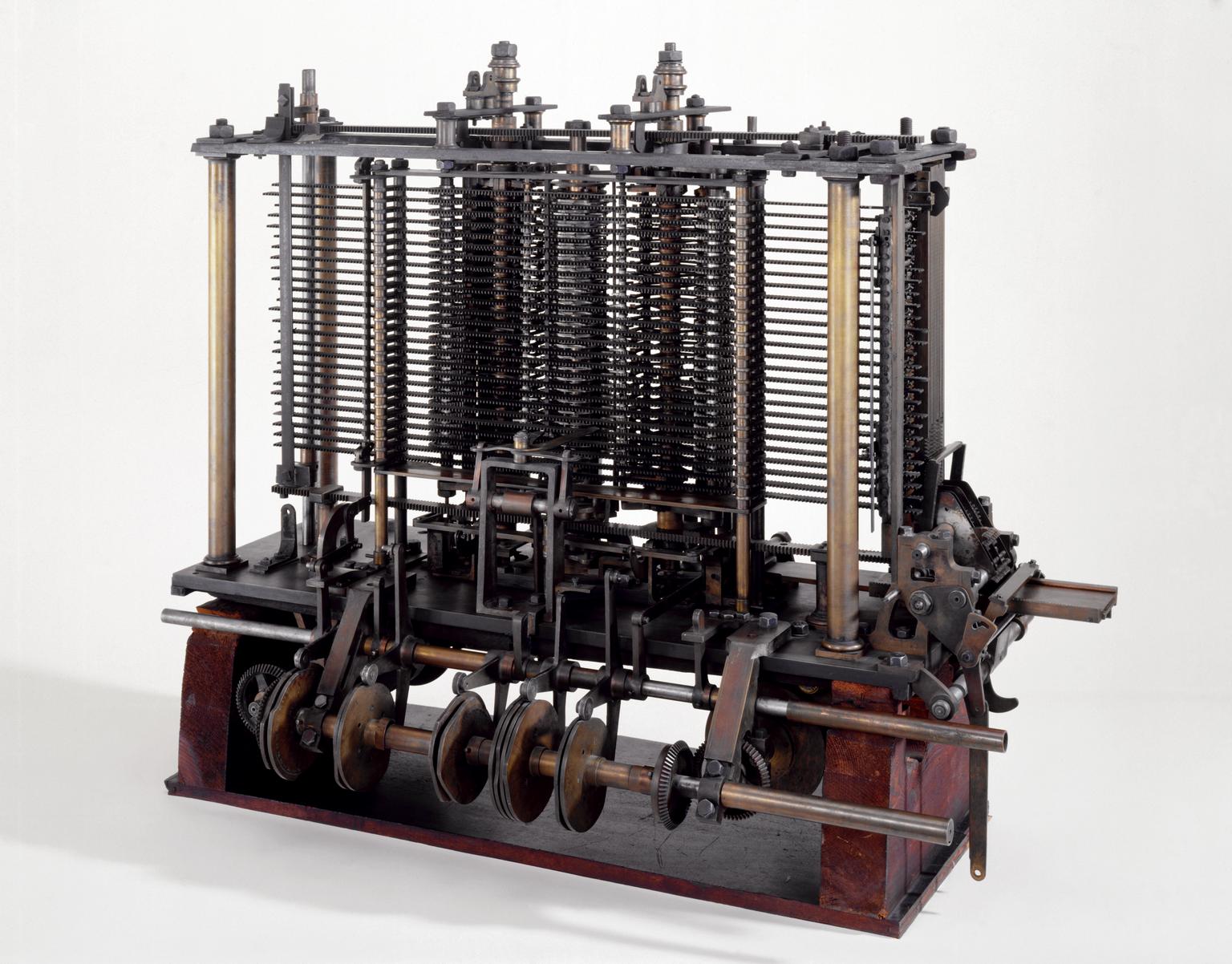 Analytical engine by Chalres Babbage (1871). Science Museum
Analytical engine by Chalres Babbage (1871). Science Museum
Manebrea (who wrote up Babbage's lecture) had a very limited view of the machine - a mechanism that does mathematics. Lovelace reads Manebrea's French paper, translates it into English and adds notes which go beyond what babbage had done
It must be evident how multifarious and complicated are the considerations: There are frequently several distinct sets of effects going on simoultaneously; all in a manner independent of each other, and yet to a greater or less degree exercising a mutual influence.
Through mathematics, see she sees this grander connection between all of us. This notion of everything being connected is also very Opium - you see it repeated in 19th century writing.
- 1830: Joseph Henry deomnstrates networked communication. For the first time, someone is able to effect a change a mile away through electric current
- 1834: Babbage conceives the Analytical Engine
Put these two together, and you have the Victorian Internet. Instead:
1832: Carl von Clausewitz: On War [Vom Kriege] This is the first attempt at a complete manual of anything that could possibly happen in a military campaign. Information, supplies, troop movements, terrain etc.
The military machine, the Army and all belonging to it, is in fact simple, and appears on this account easy to manage. But let us reflect that no part of it is in one piece, that it is composed entirely of individuals, each of which keeps up its own friction in all directions.
So: He refutes Lovelace's machine that seamlessly works together. Machines (army) are made up of many individual parts (people), all of which have friction. Of course the enemy of the analytical engine is friction.
War is the continuation of policy by other means
Clasewitz here is the first to recognize war as an extension of state policy. Between Clausewitz and the Second World War, nothing really changes in terms of military practice.
Vannevar Bush (1945) in The Atlantic: As We May Think
This has not been a scientists war - Bush is wrong here. Totally a scientists' war.
His central observation is that we're suddenly able to mass-produce complex devices, making them available to everyone.
After the second world war: The rise of the organisation. The RAND corporation is the first thinktank: designed not to produce things, but ideas and processes.
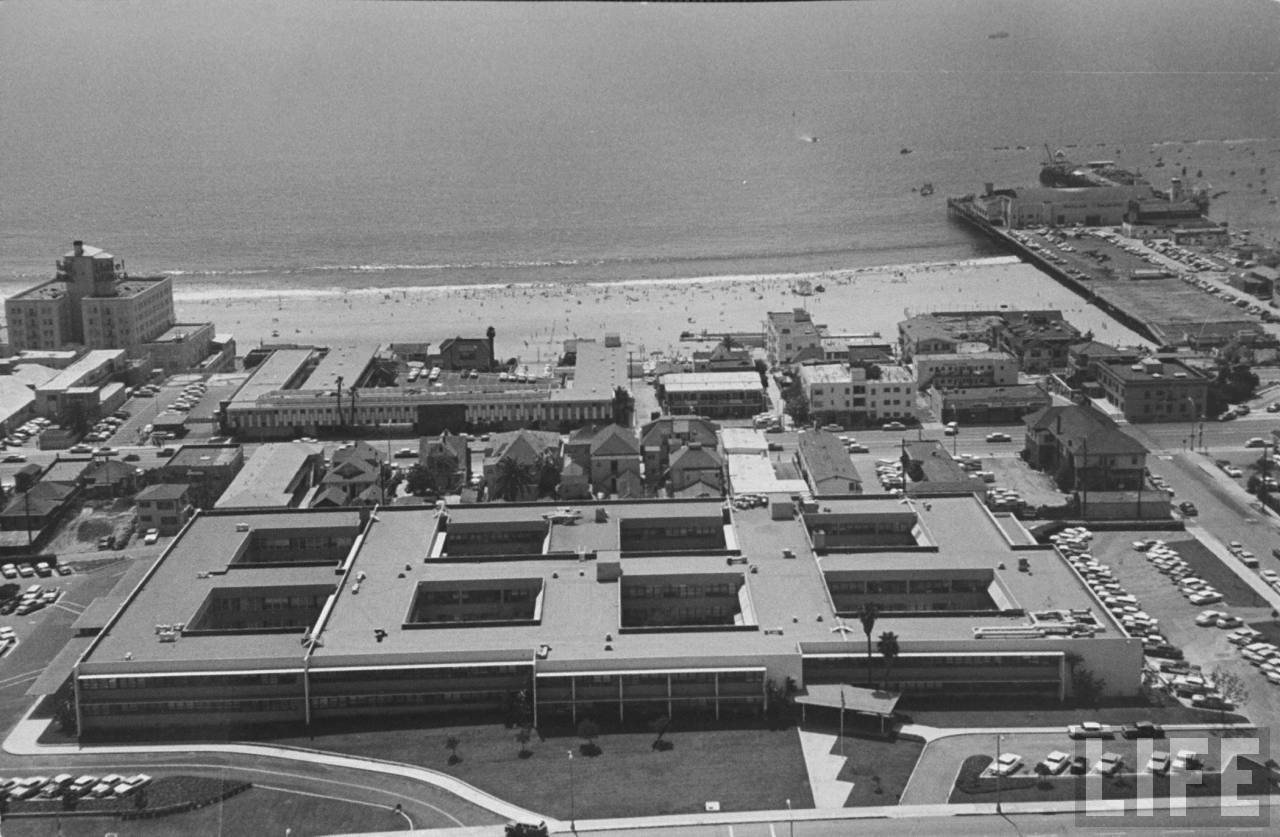 Aerial view of former RAND Corporation headquarters looking west. Santa Monica Civic Center
Aerial view of former RAND Corporation headquarters looking west. Santa Monica Civic Center
They had all these different scientists from various disciplines. The campus was designed in such a way that you had to cross each other on the way to the office. People were encouraged to leave their doors open, present work on blackboards etc. Once you were inside the building, you could talk to anyone and have access to everyone's work.
Norbert Wieder (1948): Cybernetics, or control and communication in the animal and the machine This coins the term cybernetics
the essential unity of the set of problems centering about communication, control, and statistical mechanics, whether in the machine or living tissue.
To Wiener, there is no difference between people, machines and plants - they all deal with information and react in some way. He also understands that after WW2, a powerful machine isn't one that is physically powerful (lift weight etc), but the powerful machine is one that moves information.
SAGE (1958) By Bell Telephone, IBM, RAND, ARPA All these people built a system to collate in real-time all the radar-information in the U.S. and transmit all of it to some base, where it could be accessed visually and in real-time. The screen is the first device designed for a human and a cybernetic system to interact.
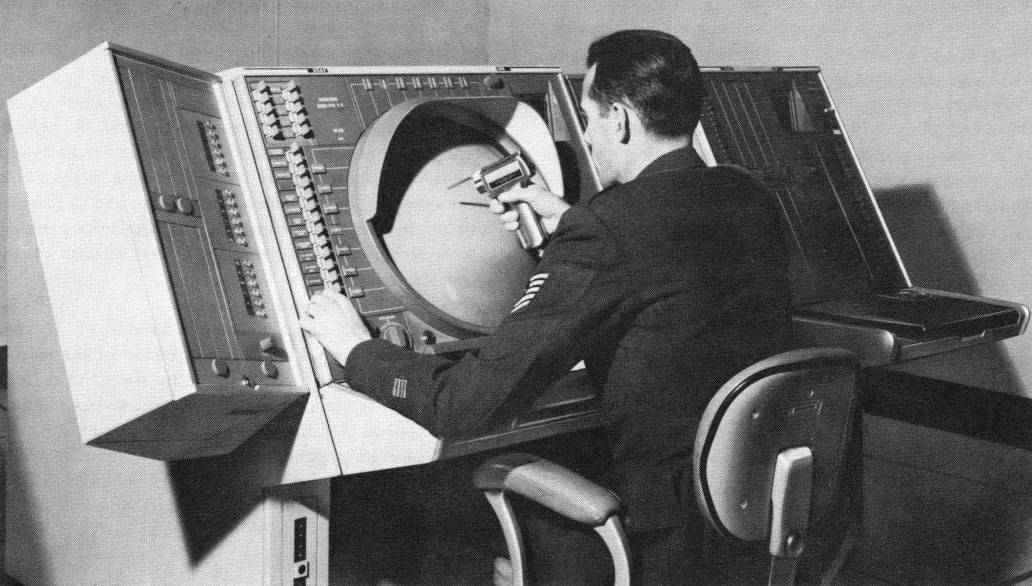 A SAGE operator at a Situation Display Console, holding a light gun. The Atlantic
A SAGE operator at a Situation Display Console, holding a light gun. The Atlantic
Of course, all of this is driven by the cold war. Paul Baran, who joined RAND in 1960, asked: How do we communicate once nuclear war starts?. He realises tat the communication network architecture itself is the problem.
- Centralised network (th roman empire model) - take the centre out and the network is useless
- Decentralised (slightly better, but take out one centre and you loose a chunk of the network)
- Distributed. This is Baran's idea. You can route your information through the network in any numbers of ways, meaning that you can loose large parts and the network still works.
Packet switching plays into this - if some of the packets are lost on the way, the others are still going to go through.
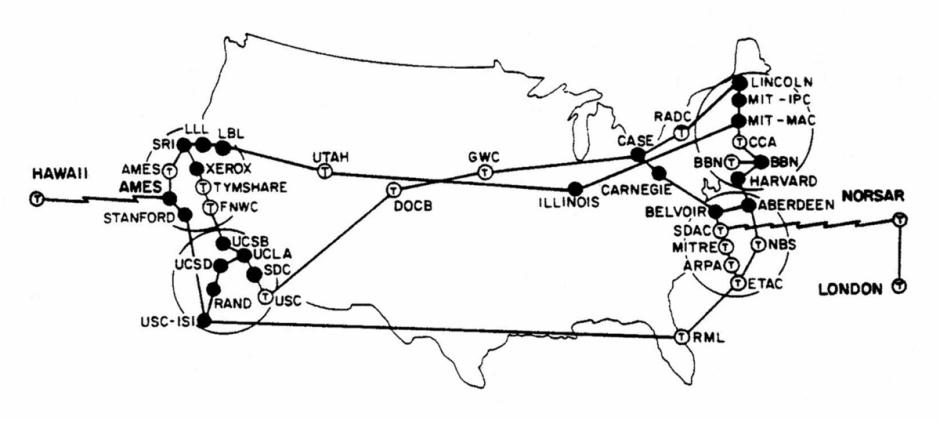 ARPANET Geographic Map, September 1973. Quartz
ARPANET Geographic Map, September 1973. Quartz
In the 1970s universities, military contractors and the military are talking to each other
 Interface Message Processor (IMP). Computer History Museum
Interface Message Processor (IMP). Computer History Museum
This is essentially the first modem. When these were installed in universities, they came in a steel safe.
- Universities are full of Vietnam critics who might smash the thing as a weapon of war
- Phone Phreaks
If you knew what to do, you could turn a telephone system into a computer. Wozniak was one of them (he built the blue box which let you make free calls somehow)
These were the first hackers.
Esalen Institute
Tim Leary: Program Me
A group of people that goes from doing LSD in the 1960s to working in computing in the 1970s. This is where the utopian idea of the internet emerges
The first gulf war is the first online war - broadcast live, 24 hours a day. The reason for this is because money markets work 24 hours a day, and people need to monitor what's going on. This is the first time news casts start talking about information as a ey part of war

Stricom: The computer wing onf the army All but war is simulation
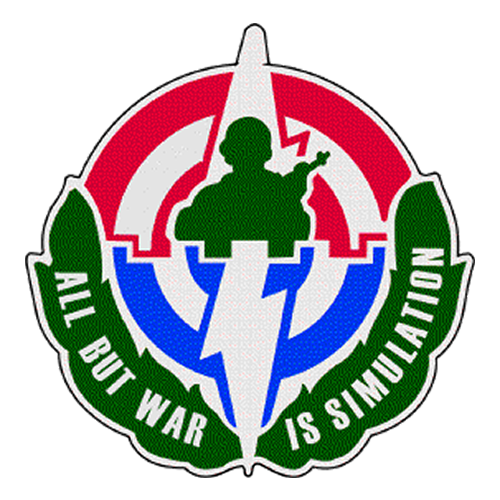
Now we're not really talking anymore about cybernetics in warfare, but cyberware. YOu could turn off electricity, explode power plants etc. But maybe more dangerously, you can mess with information - sow social conflict, manipulate elections, fake news etc.
CNN: Twitter and Facebook as Tools for social warfare Rather than some great shared record, there's fragmentization of knowledge.
